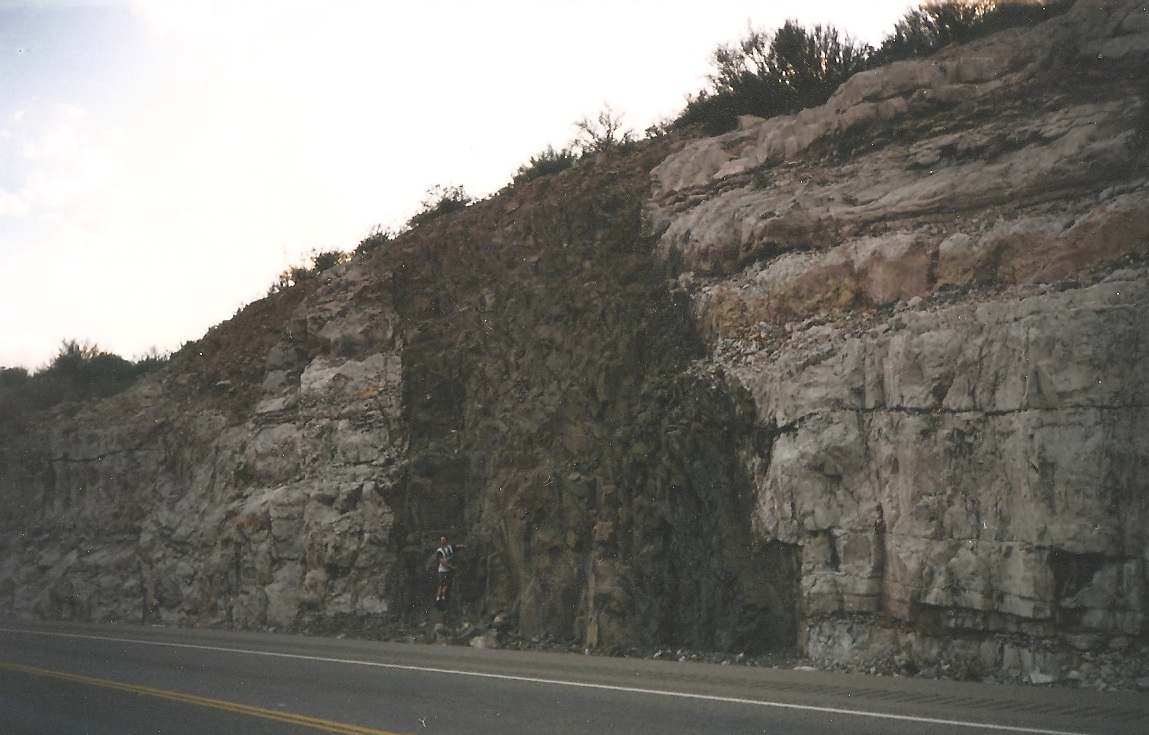Extrusive
igneous bodies –
form when magma pours out on the surface of the earth crust.
Intrusive igneous bodies –
form when magma consolidates at some depth below the earth crust. Such rock
bodies show variation in size and shape. Ex. Batholith, stock, dyke & sill.
Discordant
bodies – those
rock which cuts through the overlaying strata. Ex. Batholith, stock, dyke.
Concordant
bodies – those
rock which lie between rocks bed. They do not show transgressive relation to
the rock they invade. Ex. Sills, lopoliths and laccoliths.
Description of igneous rocks
 |
Batholith – large intrusive igneous bodies
which have transgressive relation with adjacent country rocks. Diameter usually
exceeds 100 km and their outcrop at the surface is roughly circular or oval.In
cross-section batholiths posses steep outwardly dipping and is bottomless.
Their composition is granite or granodioritic.
Stock and bass – Irregular igneous mass of
batholithic habit are called stocks. They are small in size and diameter is
between 10 to 20 km. Stocks with circular outcrop are called boss.
Lopolith
– Saucer shaped
concordant igneous body which is bent downward into a basin like shape. Its
diameter is 10 to 20 times it thickness. They are much larger than laccoliths.
It’s commonly of basic.
Laccolith – lens shaped intrusive igneous bodies which cause overlaying beds to arch in the form of doom. It has flat bass and doom top, diameter is 2 to 3 km and several hundred meters in thickness.
Laccolith – lens shaped intrusive igneous bodies which cause overlaying beds to arch in the form of doom. It has flat bass and doom top, diameter is 2 to 3 km and several hundred meters in thickness.

Phacolith – Crescent shaped body of igneous
rock which occupy crest and trough of folded strata due to minimum stress. They
are formed when igneous materials invade the folded region.
Sill – Sheet like structure which run
parallel to the bedding plane of pre exciting strata. They may be parallel,
inclined or horizontal depending on the attitude of strata in which they are
intruded. They vary in thickness from few centimeters to several meters but
they are thin compare to their length. It is composed of dolerites and basalts.


Dyke – Wall like igneous body that
cut across the strata of the pre exciting rocks in vertical of steep incline.
Thickness varies from few centimeters to several meters. They occur in group
and run parallel to one direction or in radial to a center. Dyke with circular
outcrop and conical form is called Ring Dyke and those with inverted conical
form is called Cone Sheet.


Volcanic Plug – Vertical or cylindrical shaped
igneous body.


Lavaflows – Volcanic igneous rock occurs as
lavaflow and it has tabular in shape.
Volcanic pipes are subterranean geological structures formed by the violent, supersonic eruption of deep-origin volcanoes.
Volcanic pipes are subterranean geological structures formed by the violent, supersonic eruption of deep-origin volcanoes.
No comments:
Post a Comment